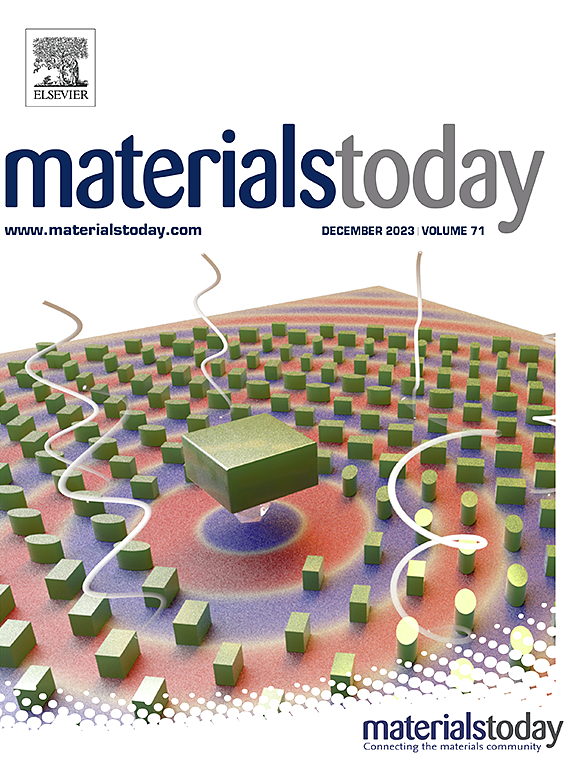Highly robust cellulose photonic hydrogels with reconfigurability and mechanochromism
IF 21.1
1区 材料科学
Q1 MATERIALS SCIENCE, MULTIDISCIPLINARY
引用次数: 0
Abstract
Biomimetic Bouligand structures hold transformative potential for developing high-performance nanocomposites in cutting-edge fields, ranging from bioplastics and architecture to aerospace. Despite the remarkable precision of the self-assembly strategy, they often function as inert substrates lacking active interfibrous and their biomimetic derivatives exhibit low ductility and insufficient toughness. Here we present robust and photonic Bouligand structural hydrogels with dynamic mechanochromic properties, achieved by reorienting the chiral nematic structures through crystallization domain reduction and chain reconstruction. These hydrogels demonstrate exceptional mechanical performance (ultrahigh stretchability of over 950 % and toughness up to 155.5 MJ∙m−3). Furthermore, the photonic hydrogel demonstrates a reversible color change with a wavelength shift of 427 nm, alongside progressive electrical sensing that remains responsive across a broad range of mechanical stretching. This innovative approach and resulting photonic Bouligand hydrogel offer significant potential for smart photonics and pave the way for practical applications of these sustainable photonic cellulose materials.

具有可重构性和机械色性的高强度纤维素光子水凝胶
仿生Bouligand结构在从生物塑料、建筑到航空航天等前沿领域开发高性能纳米复合材料方面具有变革潜力。尽管自组装策略具有显著的精度,但它们通常作为惰性基质,缺乏活性纤维间,其仿生衍生物具有低延展性和韧性不足。在这里,我们提出了具有动态力学变色性质的鲁棒光子布利甘结构水凝胶,通过结晶域还原和链重建来重新定向手性向列相结构。这些水凝胶具有优异的机械性能(超高拉伸率超过950%,韧性高达155.5 MJ∙m−3)。此外,光子水凝胶在波长移位427 nm的情况下具有可逆的颜色变化,同时在大范围的机械拉伸中保持响应的渐进电传感。这种创新的方法和由此产生的光子Bouligand水凝胶为智能光子学提供了巨大的潜力,并为这些可持续光子纤维素材料的实际应用铺平了道路。
本文章由计算机程序翻译,如有差异,请以英文原文为准。
求助全文
约1分钟内获得全文
求助全文
来源期刊

Materials Today
工程技术-材料科学:综合
CiteScore
36.30
自引率
1.20%
发文量
237
审稿时长
23 days
期刊介绍:
Materials Today is the leading journal in the Materials Today family, focusing on the latest and most impactful work in the materials science community. With a reputation for excellence in news and reviews, the journal has now expanded its coverage to include original research and aims to be at the forefront of the field.
We welcome comprehensive articles, short communications, and review articles from established leaders in the rapidly evolving fields of materials science and related disciplines. We strive to provide authors with rigorous peer review, fast publication, and maximum exposure for their work. While we only accept the most significant manuscripts, our speedy evaluation process ensures that there are no unnecessary publication delays.
 求助内容:
求助内容: 应助结果提醒方式:
应助结果提醒方式:


